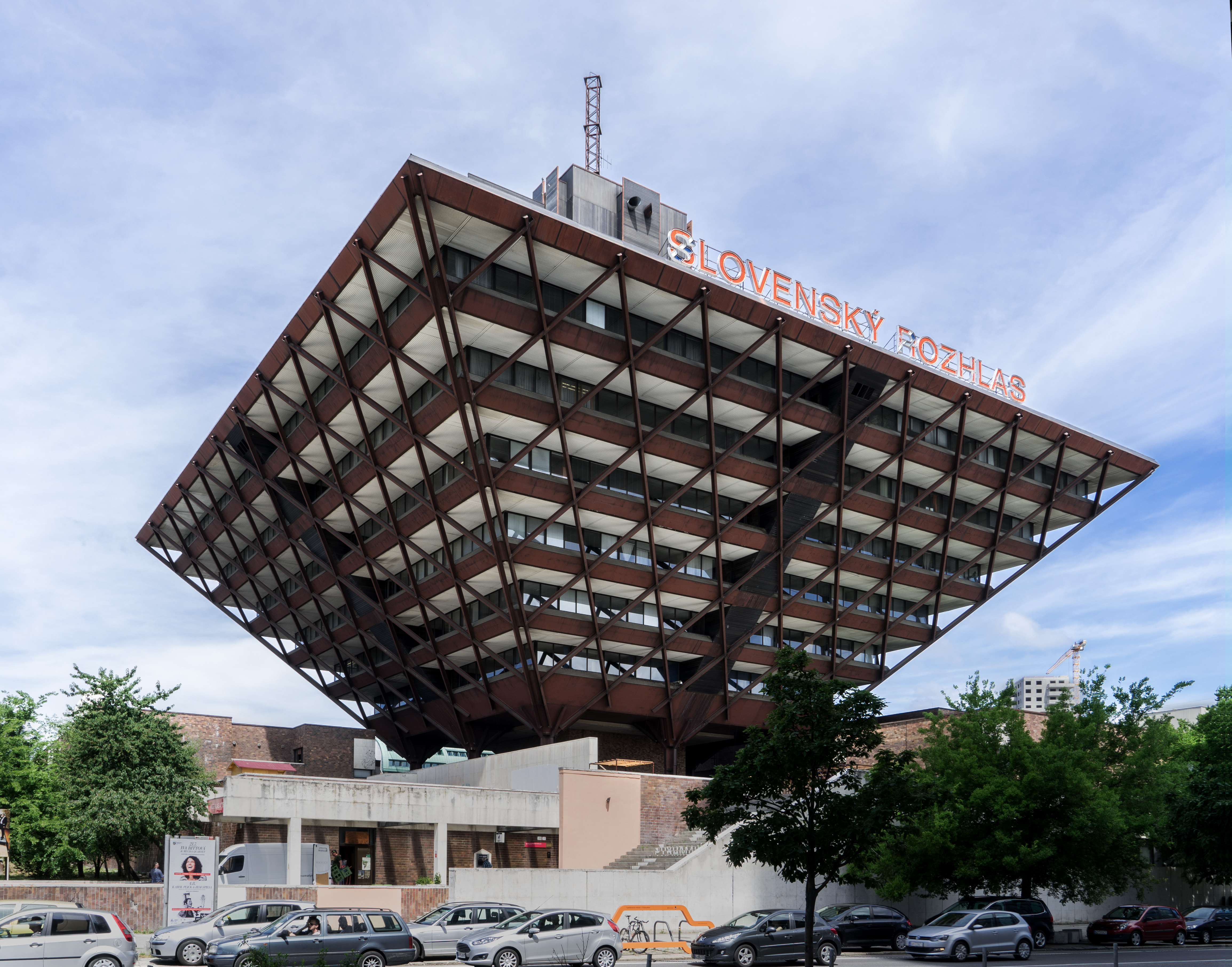|
WRHO
WRHO (89.7 FM) is a radio station broadcasting an album-oriented rock format. Licensed to Oneonta, New York, United States. The station is currently owned by Hartwick College. WRHO is a small, noncommercial educational broadcast facility on the Hartwick College campus in Oneonta, NY. At 270 watts, WRHO broadcasts 24 hours per day, 365 days a year at 89.7 FM. The studios are located inside the Dewar Union Hall Communication Suite on Hartwick's campus and broadcasts to a listening audience within a ~30mile radius via a 500-watt transmitter. WRHO has been on the air for over four decades, playing music not otherwise heard on other area stations. WRHO also connects with the Oneonta community at large by stating public service announcements of upcoming events, by hosting bands, and by offering services to other clubs and organizations on campus. Every year during Spring Weekend WRHO broadcasts live for 72 hours from a tent on Frisbee Field on the Hartwick campus. On WRHO, all types ... [...More Info...] [...Related Items...] OR: [Wikipedia] [Google] [Baidu] |
Hartwick College
Hartwick College is a private liberal arts college in Oneonta, New York. The institution's origin is rooted in the founding of Hartwick Seminary in 1797 through the will of John Christopher Hartwick. In 1927, the Seminary moved to expand into a four-year college and was offered land by the city of Oneonta to move to its current location. The college has 1,200 undergraduate students from 30 states and 22 countries, 187 faculty members, and a student-faculty ratio of 11:1. History Hartwick College traces its history to the will of Lutheran minister John Christopher Hartwick, who died in 1796. The following year the executors of his will decided to establish a seminary in his name. Establishing the Seminary, History, Hartwick College The first student graduated in 1803, and in 1816 the New York State Legislature incorporated the s ... [...More Info...] [...Related Items...] OR: [Wikipedia] [Google] [Baidu] |
Oneonta, New York
Oneonta ( ) is a city in southern Otsego County, New York, United States. It is one of the northernmost cities of the Appalachian Region. According to the 2020 U.S. Census, Oneonta had a population of 13,079. Its nickname is "City of the Hills." While the word "oneonta" is of undetermined origin, it is popularly believed to mean "place of open rocks" in the Mohawk language. This refers to a prominent geological formation known as "Table Rock" at the western end of the city. The city is surrounded by the town of Oneonta, a separate municipal and political jurisdiction. Oneonta Municipal Airport (N66) is north of the city. History Indigenous ancestors of Algonquin and Iroquoian-speaking Native Americans inhabited the land in the territory of Oneonta before European colonists settled in the area. The Five Nations of the Iroquois Confederacy are believed to have emerged and gained dominance prior to the 15th century; they were in place at the time of early French and Dutch ... [...More Info...] [...Related Items...] OR: [Wikipedia] [Google] [Baidu] |
Album-oriented Rock
Album-oriented rock (AOR, originally called album-oriented radio) is an FM radio format created in the United States in the 1970s that focuses on the full repertoire of rock albums and is currently associated with classic rock. Album-oriented radio was originally established by U.S. radio stations dedicated to playing album tracks by rock artists from the hard rock to progressive rock genres. In the mid-1970s, AOR was characterized by a layered, mellifluous sound and sophisticated production with considerable dependence on melodic hooks. Using research and formal programming to create an album rock format with greater commercial appeal, the AOR format achieved tremendous popularity in the late 1970s and early 1980s. From the early 1980s onward, the "album-oriented radio" term became normally used as the abbreviation of "album-oriented rock," meaning radio stations specialized in classic rock recorded during the late 1960s and 1970s. The term is also commonly conflated wi ... [...More Info...] [...Related Items...] OR: [Wikipedia] [Google] [Baidu] |
Watt
The watt (symbol: W) is the unit of power or radiant flux in the International System of Units (SI), equal to 1 joule per second or 1 kg⋅m2⋅s−3. It is used to quantify the rate of energy transfer. The watt is named after James Watt (1736–1819), an 18th-century Scottish inventor, mechanical engineer, and chemist who improved the Newcomen engine with his own steam engine in 1776. Watt's invention was fundamental for the Industrial Revolution. Overview When an object's velocity is held constant at one metre per second against a constant opposing force of one newton, the rate at which work is done is one watt. : \mathrm In terms of electromagnetism, one watt is the rate at which electrical work is performed when a current of one ampere (A) flows across an electrical potential difference of one volt (V), meaning the watt is equivalent to the volt-ampere (the latter unit, however, is used for a different quantity from the real power of an electrical circuit ... [...More Info...] [...Related Items...] OR: [Wikipedia] [Google] [Baidu] |
FM Broadcasting
FM broadcasting is a method of radio broadcasting using frequency modulation (FM). Invented in 1933 by American engineer Edwin Armstrong, wide-band FM is used worldwide to provide high fidelity sound over broadcast radio. FM broadcasting is capable of higher fidelity—that is, more accurate reproduction of the original program sound—than other broadcasting technologies, such as AM broadcasting. It is also less susceptible to common forms of interference, reducing static and popping sounds often heard on AM. Therefore, FM is used for most broadcasts of music or general audio (in the audio spectrum). FM radio stations use the very high frequency range of radio frequencies. Broadcast bands Throughout the world, the FM broadcast band falls within the VHF part of the radio spectrum. Usually 87.5 to 108.0 MHz is used, or some portion thereof, with few exceptions: * In the former Soviet republics, and some former Eastern Bloc countries, the older 65.8–74 M ... [...More Info...] [...Related Items...] OR: [Wikipedia] [Google] [Baidu] |
Radio Station
Radio broadcasting is transmission of audio (sound), sometimes with related metadata, by radio waves to radio receivers belonging to a public audience. In terrestrial radio broadcasting the radio waves are broadcast by a land-based radio station, while in satellite radio the radio waves are broadcast by a satellite in Earth orbit. To receive the content the listener must have a broadcast radio receiver (''radio''). Stations are often affiliated with a radio network which provides content in a common radio format, either in broadcast syndication or simulcast or both. Radio stations broadcast with several different types of modulation: AM radio stations transmit in AM ( amplitude modulation), FM radio stations transmit in FM (frequency modulation), which are older analog audio standards, while newer digital radio stations transmit in several digital audio standards: DAB (digital audio broadcasting), HD radio, DRM ( Digital Radio Mondiale). Television bro ... [...More Info...] [...Related Items...] OR: [Wikipedia] [Google] [Baidu] |
Album-oriented Rock
Album-oriented rock (AOR, originally called album-oriented radio) is an FM radio format created in the United States in the 1970s that focuses on the full repertoire of rock albums and is currently associated with classic rock. Album-oriented radio was originally established by U.S. radio stations dedicated to playing album tracks by rock artists from the hard rock to progressive rock genres. In the mid-1970s, AOR was characterized by a layered, mellifluous sound and sophisticated production with considerable dependence on melodic hooks. Using research and formal programming to create an album rock format with greater commercial appeal, the AOR format achieved tremendous popularity in the late 1970s and early 1980s. From the early 1980s onward, the "album-oriented radio" term became normally used as the abbreviation of "album-oriented rock," meaning radio stations specialized in classic rock recorded during the late 1960s and 1970s. The term is also commonly conflated wi ... [...More Info...] [...Related Items...] OR: [Wikipedia] [Google] [Baidu] |
Federal Communications Commission
The Federal Communications Commission (FCC) is an independent agency of the United States federal government that regulates communications by radio, television, wire, satellite, and cable across the United States. The FCC maintains jurisdiction over the areas of broadband access, fair competition, radio frequency use, media responsibility, public safety, and homeland security. The FCC was formed by the Communications Act of 1934 to replace the radio regulation functions of the Federal Radio Commission. The FCC took over wire communication regulation from the Interstate Commerce Commission. The FCC's mandated jurisdiction covers the 50 states, the District of Columbia, and the territories of the United States. The FCC also provides varied degrees of cooperation, oversight, and leadership for similar communications bodies in other countries of North America. The FCC is funded entirely by regulatory fees. It has an estimated fiscal-2022 budget of US $388 million. It h ... [...More Info...] [...Related Items...] OR: [Wikipedia] [Google] [Baidu] |
College Radio Stations In New York (state)
A college (Latin: ''collegium'') is an educational institution or a University system, constituent part of one. A college may be a academic degree, degree-awarding Tertiary education, tertiary educational institution, a part of a collegiate university, collegiate or federal university, an institution offering vocational education, or a secondary school. In most of the world, a college may be a high school or secondary school, a college of further education, a training institution that awards trade qualifications, a higher-education provider that does not have university status (often without its own degree-awarding powers), or a constituent part of a university. In the United States, a college may offer undergraduate education, undergraduate programs – either as an independent institution or as the undergraduate program of a university – or it may be a residential college of a university or a Community colleges in the United States, community college, referring ... [...More Info...] [...Related Items...] OR: [Wikipedia] [Google] [Baidu] |




